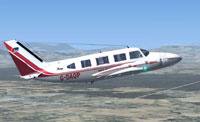Landings are something we do often. If you have taken off, you are going to have to land somewhere. The question is how to do it in the safest and most efficient manner. A lot depends on what you are flying, how much experience you have and of course, the weather. Landing a J-3 Cub is a lot different than a high speed single like a Bonanza.
Factors to consider are of course the wind (speed and direction), type surface (grass or concrete), plane characteristics and of course, pilot skill. I will go back awhile to landing and taking off at a small airport that had a runway made of asphalt. Not only were there scattered stones on it, but it had a moderate slope and a tail wind. Taking off was relatively easy, after you accounted for the stones/pebbles. You just had not to use the entire runway, but taxi to where the runway became smoother and free of debris.
The take-off went well, just delay full power until clear of the debris. Delaying full power and watching climb airspeed to be above stall were key. All went well. Now for the landing. As there was a moderate cross wind of about ten knots a alignment was the main consideration. Not being visually aligned with the runway take getting use to. Depending on the runway length and the quality of your brakes, airspeed is an important factor to take into account.
As all went well, there isn't much more to add. So, adequate preparation before taking off and landing are mandatory for a safe flight.

